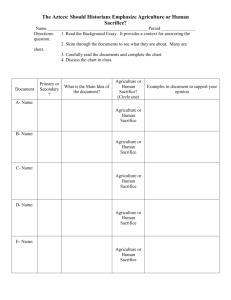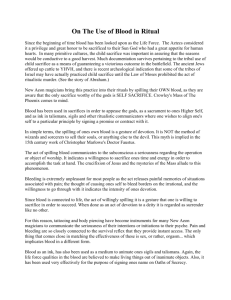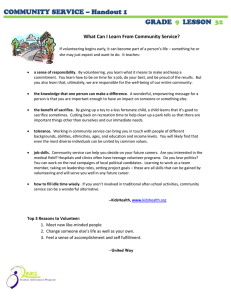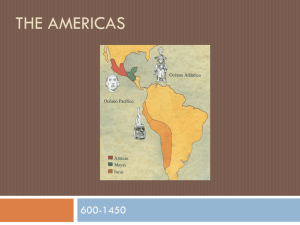Sacrifice Lots
advertisement
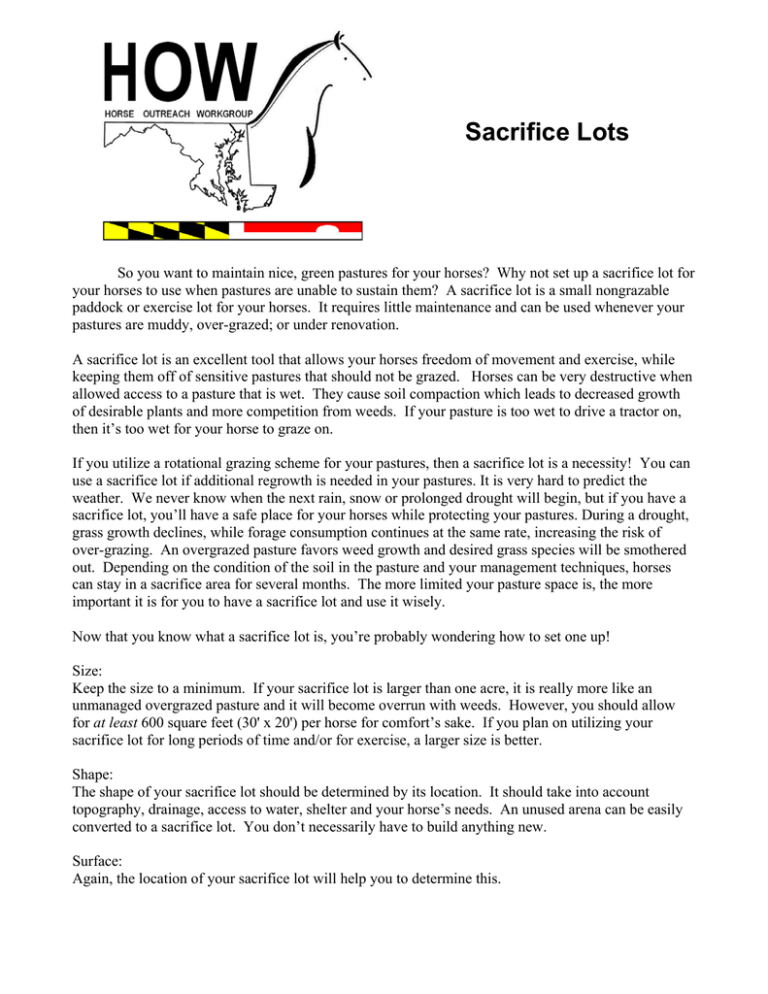
Sacrifice Lots So you want to maintain nice, green pastures for your horses? Why not set up a sacrifice lot for your horses to use when pastures are unable to sustain them? A sacrifice lot is a small nongrazable paddock or exercise lot for your horses. It requires little maintenance and can be used whenever your pastures are muddy, over-grazed; or under renovation. A sacrifice lot is an excellent tool that allows your horses freedom of movement and exercise, while keeping them off of sensitive pastures that should not be grazed. Horses can be very destructive when allowed access to a pasture that is wet. They cause soil compaction which leads to decreased growth of desirable plants and more competition from weeds. If your pasture is too wet to drive a tractor on, then it’s too wet for your horse to graze on. If you utilize a rotational grazing scheme for your pastures, then a sacrifice lot is a necessity! You can use a sacrifice lot if additional regrowth is needed in your pastures. It is very hard to predict the weather. We never know when the next rain, snow or prolonged drought will begin, but if you have a sacrifice lot, you’ll have a safe place for your horses while protecting your pastures. During a drought, grass growth declines, while forage consumption continues at the same rate, increasing the risk of over-grazing. An overgrazed pasture favors weed growth and desired grass species will be smothered out. Depending on the condition of the soil in the pasture and your management techniques, horses can stay in a sacrifice area for several months. The more limited your pasture space is, the more important it is for you to have a sacrifice lot and use it wisely. Now that you know what a sacrifice lot is, you’re probably wondering how to set one up! Size: Keep the size to a minimum. If your sacrifice lot is larger than one acre, it is really more like an unmanaged overgrazed pasture and it will become overrun with weeds. However, you should allow for at least 600 square feet (30' x 20') per horse for comfort’s sake. If you plan on utilizing your sacrifice lot for long periods of time and/or for exercise, a larger size is better. Shape: The shape of your sacrifice lot should be determined by its location. It should take into account topography, drainage, access to water, shelter and your horse’s needs. An unused arena can be easily converted to a sacrifice lot. You don’t necessarily have to build anything new. Surface: Again, the location of your sacrifice lot will help you to determine this. Surfaces can be anything from a grass cover (if you’re lucky!) to bare soil, sand, crushed rock or stonedust . Make sure that the area stays dry because your horses will spend a lot of time in this area during inclement weather. A dry sacrifice lot will help prevent hoof diseases and parasite problems. Location: DRAINAGE is the key word here! Locate the sacrifice lot in an area with good drainage, preferably in an area with less than a 5 percent slope. Any drainage off your sacrifice lot should go into a buffer area or vegetated filter strip; NEVER into any body of water i.e.: streams, rivers, wetlands etc. Avoid low-lying areas, as they will accumulate mud and be difficult to maintain. Don’t locate your sacrifice lot over a septic system, including leach fields. DO locate it in a south or east-facing area. West and especially north-facing areas will be more difficult to dry out because they are shaded. Offsite water runoff should be diverted around the sacrifice lot to help keep it dry. Maintenance: Most sacrifice lot maintenance issues involve safety. Make sure the fences are strong and free of any sharp projections. Remove manure on a regular basis (frequency will depend upon the use and concentration of horses in the area). You may want to consider a vegetated sacrifice lot, but unless you have adequate space and very carefully rotate your pastures, this will be difficult to achieve. If you have a shelter in your lot, make sure it is also maintained so that it’s safe for the horses. Be sure to have proper gutters and downspouts on any buildings and divert storm water away from the lot to a safe non-erosive are outside the lot. Help is only a phone call away: your local Cooperative Extension office or Soil Conservation District can help you determine the best location for your sacrifice lot. For more information on horse manure management and other soil conservation and water quality practices, contact you local Soil Conservation District. For more information contact your local Soil Conservation District/ Natural Resources Conservation Service/ (SCD/ NRCS) office or county Maryland Cooperative Extension (MCE) office. Addresses and phone numbers can be found at http://www.mda.state.md.us/resource_conservation/technical_assistance/index.php , http://www.md.nrcs.usda.gov/contact/directory or http://extension.umd.edu or check the listing County Government for SCD/MCE or US Government, Department of Agriculture for NRCS of the phone book blue pages. The Horse Outreach Workgroup was established to provide information to horse owners on pasture and manure management issues. Technical assistance is available from local county Soil Conservation Districts/Natural Resource Conservation Service and the Maryland Cooperative Extension office. The workgroup consists of representatives from local Soil Conservation Districts, Maryland Department of Agriculture, Natural Resource Conservation Service, Cooperative Extension, University of Maryland, the Equiery, and the Maryland Horse Council. The Maryland Department of Agriculture’s Office of Resource Conservation provides coordination for the workgroup. January 2004, revised January 2007
